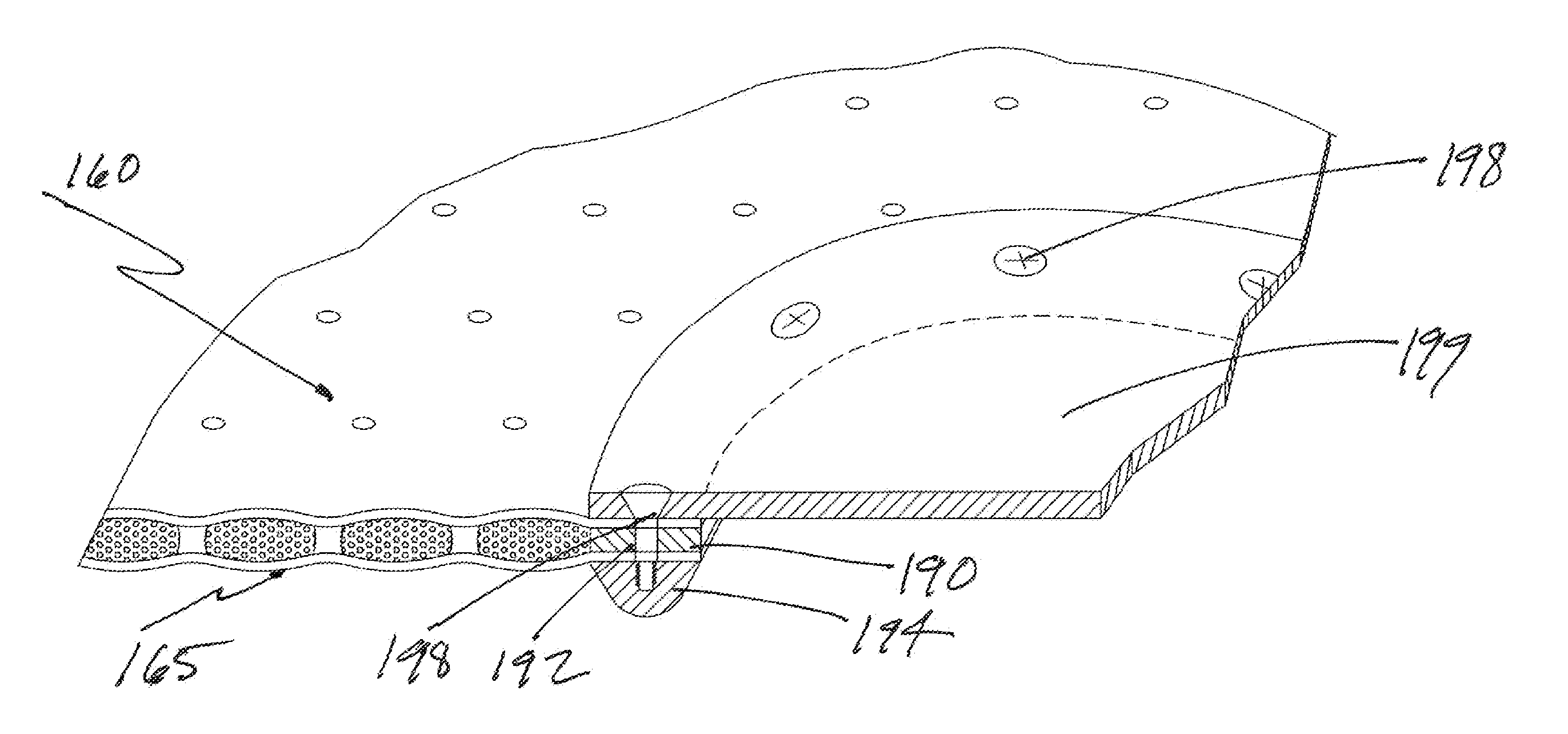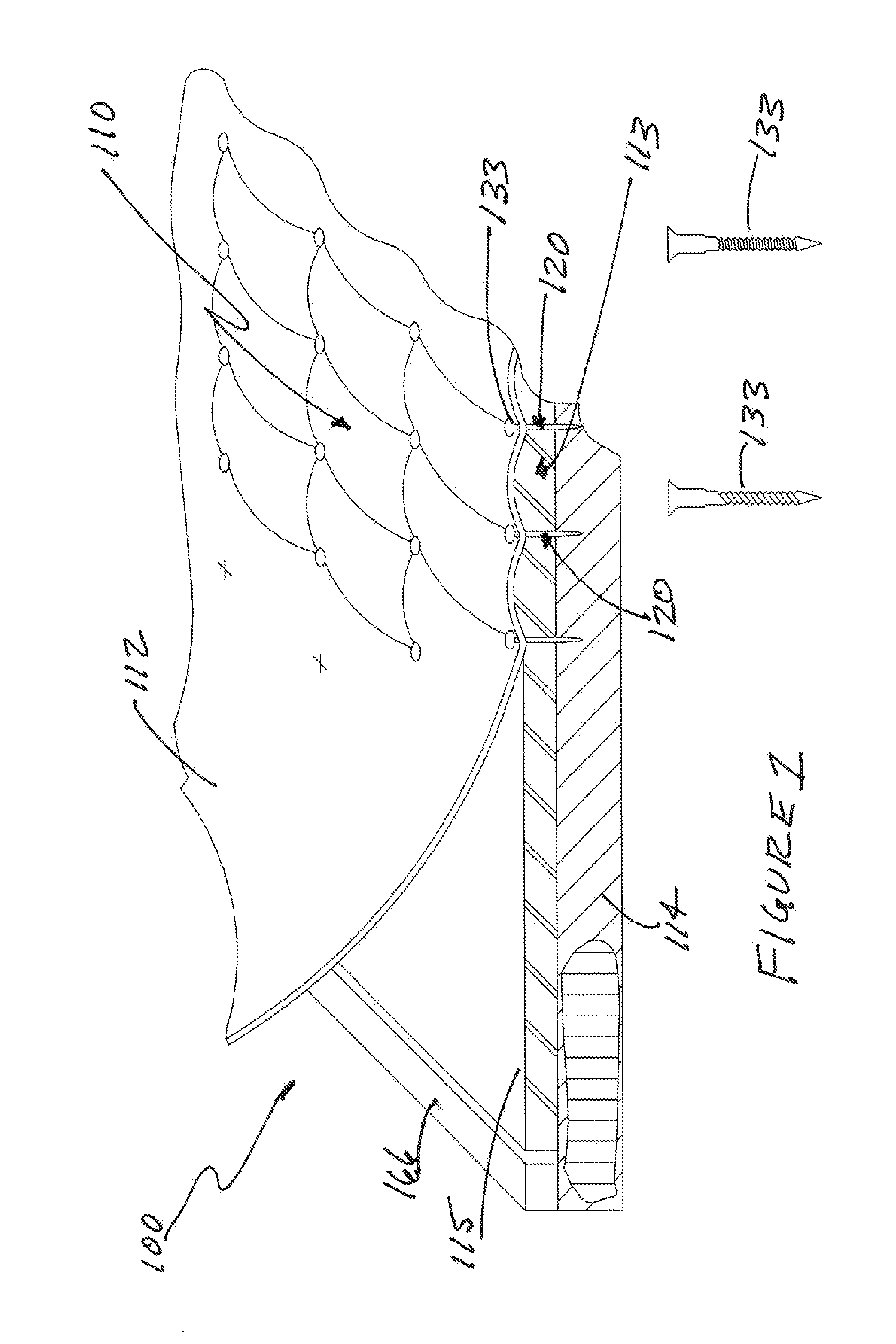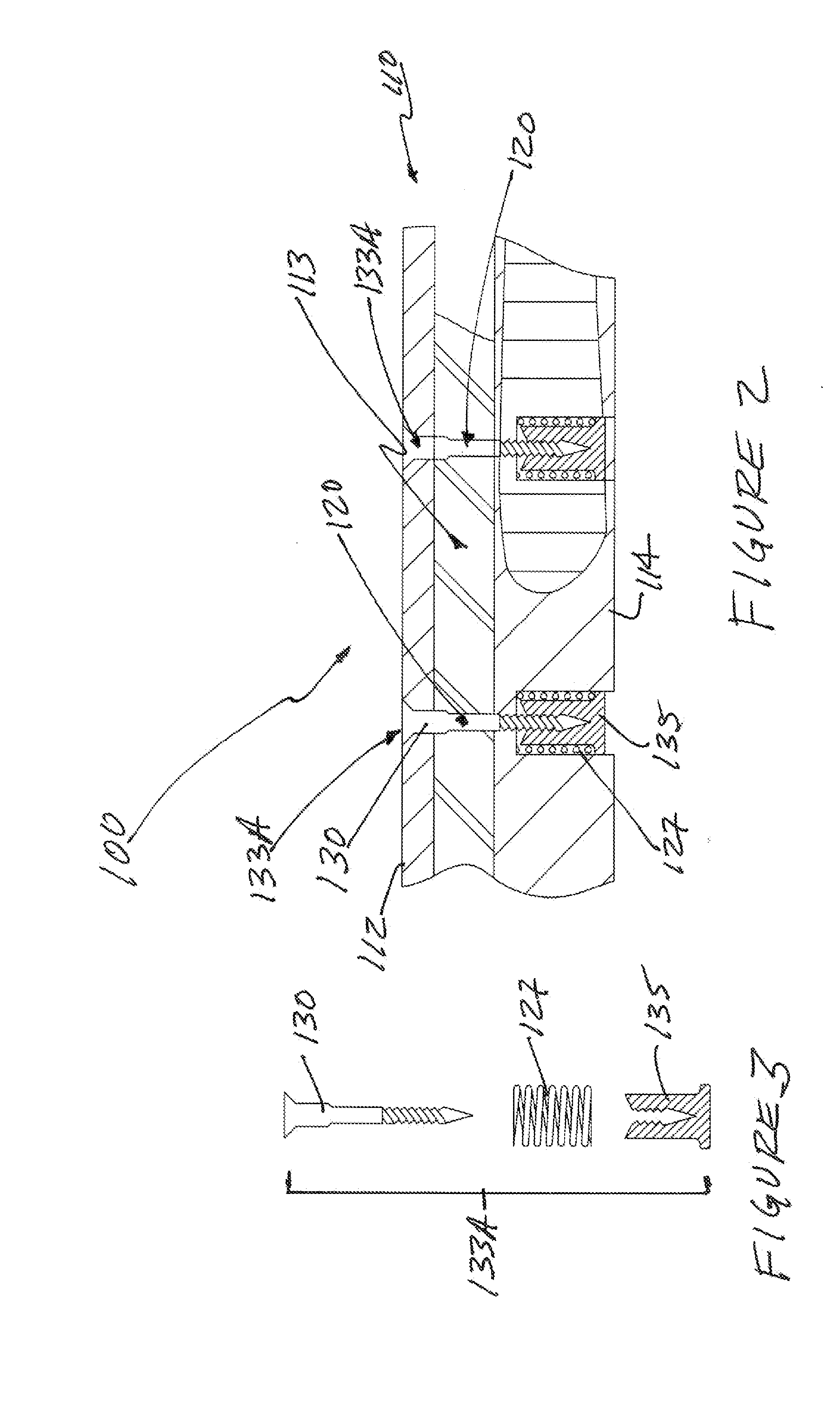Self-sealing fuel cell and methods of use
- Summary
- Abstract
- Description
- Claims
- Application Information
AI Technical Summary
Benefits of technology
Problems solved by technology
Method used
Image
Examples
example 1
[0083]A pressure reservoir can be created by relying on elastic node connectors, as described herein. One example of constructing a self-sealing system includes the following steps: Cast a 0.02 to 0.4 inch thick wax sheet; Drill uniformly spaced holes of about 0.170 to about 0.35 inch in diameter in wax sheet; Provide a flat, level, substrate; Mix and degas a quantity of uncured elastomer and pour into or onto preset substrate; Lay perforated wax sheet into wet elastomer and allow elastomer to flow through holes; Pour (or laminate) a top layer to complete basic construct; Allow low temperature cure (lower than melting point of wax); Attach a drain / injection port into one corner and a vent in an opposing corner then cure; Melt out wax core; Inject molten sealant material to a prescribed quantity and pressure; Seal drain / injection port and vent then allow to cool.
example 2
[0084]The self-sealing system constructed in Example 1 was tested with 12 gauge shotgun slugs. Penetration sites of about 0.7 inch in diameter are created. Sealing of penetration sites is instantaneous. Close proximity penetration sites seal instantaneously, if there is a sufficient sealant material and pressure reservoir. Test was conducted at about standard temperature and pressure.
example 3
[0085]At least fifty specimens of the various cell configurations, including variations in cell structure material and in sealant material, have been ballistically tested with varying degrees of success and hundreds of static and environmental tests have been conducted. Twelve gauge shotgun slugs were used in most tests, which created a large gaping wound, approximately 15 mm diameter. In order to keep costs to a minimum all the early specimens were shot without a liquid backing. Tests for leakage were done by merely placing the mouth over the wound and blowing hard. This was done as quickly as possible after the specimen had been struck, less than five seconds lapse time. In almost all cases the wound had sealed completely. Subsequent tests with a water-filled standpipe placed over the wound showed resistance to blowout of at least a 50-inch (125 mm) head of water, the height limit of the standpipe. It was estimated that depending on wound size; this resistance to blowout could exc...
PUM
 Login to View More
Login to View More Abstract
Description
Claims
Application Information
 Login to View More
Login to View More - R&D
- Intellectual Property
- Life Sciences
- Materials
- Tech Scout
- Unparalleled Data Quality
- Higher Quality Content
- 60% Fewer Hallucinations
Browse by: Latest US Patents, China's latest patents, Technical Efficacy Thesaurus, Application Domain, Technology Topic, Popular Technical Reports.
© 2025 PatSnap. All rights reserved.Legal|Privacy policy|Modern Slavery Act Transparency Statement|Sitemap|About US| Contact US: help@patsnap.com



